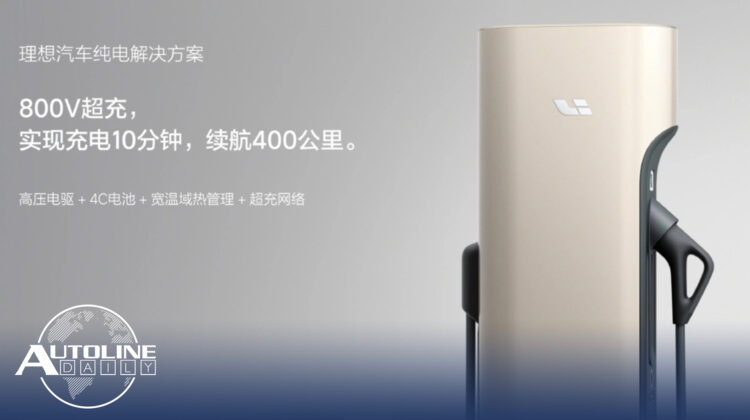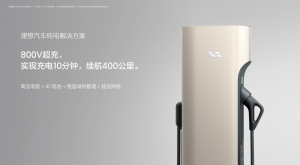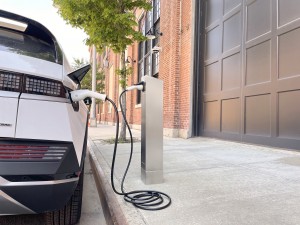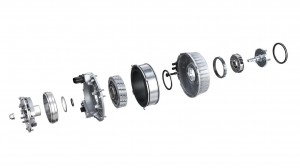
Listen to “AD #3551 – BYD, CATL Unveil Sodium-Ion Batteries; Li Auto 800V = 400KM in 10 Min; Farley: Ford Needs to Rethink China” on Spreaker.
Follow us on social media:
Runtime:11:19
0:00 Shanghai Auto Show is Jam Packed
0:36 BYD, CATL Unveil Sodium-Ion Batteries
1:27 Get ~250 Miles of Range in 10 Minutes
2:11 Farley: Ford Needs to Rethink China
3:39 Hyundai Testing Curbside Charging
4:47 Stellantis Testing E-Fuels
5:55 Porsche Tests V2X at 200+ KM/H
7:39 VW’s EV Sales Up Globally, Down in China
8:38 Canada Offers Big Incentives for VW Battery Plant
9:08 Developing Countries Nationalize EV Raw Materials
9:58 Schaeffler Making Hub Motors for 3 Chinese Companies
Visit our sponsors to thank them for their support of Autoline Daily: Bridgestone, Intrepid Control Systems, and Schaeffler.
This is Autoline Daily, the show dedicated to enthusiasts of the global automotive industry.
SHANGHAI AUTO SHOW IS JAM PACKED
Auto shows aren’t what they used to be. Most automakers have pulled out of most auto shows, preferring to host their own private events to launch new models. In fact, what used to be the top auto shows in the world in Frankfurt and Geneva don’t even exist anymore. But there is one show that is still as big and as important as they ever were, and that’s the auto show in Shanghai. It’s running this week, and here are some of the highlights we’ve learned about.
BYD, CATL UNVEIL SODIUM-ION BATTERIES
Three weeks ago Stellantis CEO Carlos Tavares warned there isn’t enough lithium to build all the batteries needed for BEVs. So BYD and CATL said, ‘Oh yeah? Well take a look at this.’ They’re both going into mass production with sodium-ion batteries later this year. And those batteries don’t use any lithium at all. They don’t use nickel, manganese, or cobalt, either. And they’re not as affected as much by cold weather. CATL’s sodium batteries reportedly have an energy density of 200 Wh/kg, which is better than its LFP, or lithium iron phosphate, batteries. Sodium batteries will likely be used mostly for base models or cheaper EVs, but they will offset a lot of demand for lithium.
LI AUTO 800v = 400 KM IN 10 MINUTES
Another complaint about EVs is that they take too long to charge. But at the Shanghai show, Chinese EV startup, Li Auto, introduced an 800V fast-charging system that can provide an impressive 400 kilometers or nearly 250 miles of range in just 10 minutes. Li Auto plans to install 300 of the chargers along highways in China this year and by 2025 it wants to have 3,000 fast chargers covering 90% of highways and major cities in the country. So if automakers are getting down to a 10 minute charge today, where will it be in another 5 years?
FARLEY: FORD NEEDS TO RETHINK CHINA
Ford CEO Jim Farley says the company has to rethink what its brand is going to be in China. He says the middle of the market in China is completely saturated, especially with 2-row crossovers. There’s a ton of overcapacity and automakers in that segment are largely losing money. We think that means Ford will have to play to its strengths in China, which would include electric commercial trucks and vans as well as electric versions of the Mustang, Bronco, Ranger and Raptor. Farley also commented on Tesla rapidly raising and lowering the prices of its cars. He said that Elon Musk is going to learn that refreshing your product is very important in the auto industry. And by that he means Tesla needs visual updates to its styling, not just over the air updates.
HYUNDAI TESTING CURBSIDE CHARGING
If you want to get an EV but you live in an apartment or condo, where are you going to plug in? Well, Hyundai is working on it. It’s partnering with a company called itselectric to test curbside charging in New York City. They’re installing 6 charging posts in two locations in Brooklyn that will be used by selected EV users in the area for two months. After the initial test, the posts will remain operational for an extra four months, so they can study how to scale that up for wide scale use. Itselectric is partnering with building owners. It taps into the building for electricity, and shares some of the charging revenue with the building owners. That eliminates wasted time getting permits from the city, or more power lines from the electric utility. The Level 2 chargers have between 220 and 240 volts and don’t have charging cords attached. Instead, those are provided to customers to keep in their cars. Itselectric installs, operates and maintains the chargers at no cost to the city or the property owner.
STELLANTIS TESTING E-FUELS
Europe is going to ban sales of all new ICEs after 2035, unless they only run on e-fuels. So Stellantis is jumping on the e-fuel bandwagon. It’s finalizing tests of e-fuels on 28 gas and diesel engine families that were built from 2014 to 2029. That represents a total of 28 million vehicles. The company is testing tailpipe emissions, startability, engine power, reliability and the entire fuel system. E-fuels can reduce CO2 emissions by up to 90%. But, unless I’ve missed something, it’s missing one big part of the equation. Stellantis made no mention of any efforts to help develop and produce e-fuels, which take three times as much energy to make, and costs three times as much as gasoline. Unless someone figures out how to slash the cost, e-fuels are only going to be affordable for wealthy owners to tool around in their expensive classics.
PORSCHE TESTS V2X AT 200 KM/H
V2X or vehicle-to-everything communication means your car can talk to other cars, or just about anything else, like traffic lights. And it could be a massive improvement in safety because it could literally prevent cars from crashing into each other. But V2X requires access to the wi-fi network and Porsche is testing the system to a level we’ve never seen before. It wanted to see how a vehicle’s speed affects bandwidth. It found that up to 100 km/h or 62 MPH that data rates remain pretty constant, with upload speeds of 150 megabits per second. At 200 km/h or 124 MPH the upload speed drops to 120 megabits per second. And it’s not until “significantly higher speeds” that really decrease, but Porsche says the upload speed is still sufficient for V2X communication at 90 megabits per second. So that means V2X should work just fine when you have your foot to the floor blasting down the autobahn.
VW’S EV SALES UP GLOBALLY, DOWN IN CHINA
Volkswagen bet big on electric cars, and that bet is starting to pay off, at least in some markets. It delivered 141,000 BEVs to customers worldwide in the first three months of the year. That’s up 42% from the 99,200 it sold a year ago. Most of the growth came from Europe, which accounted for 70% of all those sales. VW sold 21,500 BEVs in China and 15,700 in the U.S. That China number is kind of shocking. As in shockingly bad. VW’s EV sales actually dropped 25% in China. And those are group sales, including Audi and Porsche. Not only is China the biggest car market in the world, it’s VW’s largest market. And it needs to sell more BEVs in China than in Europe and the U.S. combined.
CANADA OFFERS BIG INCENTIVES FOR VW BATTERY PLANT
The Inflation Reduction Act kicked off a California Gold rush to build battery plants in the US. The Canadians didn’t want to get left out, so it’s providing nearly $10 billion to Volkswagen to build a battery plant in St. Thomas, Ontario. That’s about the same amount VW would have got if it opened the plant in the U.S. Canada is also talking to LG Energy Solution and Stellantis for incentives for battery plants.
DEVELOPING COUNTRIES NATIONALIZE EV RAW MATERIALS
Developing countries with the raw materials needed to make batteries are deciding they want a piece of the action. Last year, Mexico nationalized its lithium deposits, in 2020 Indonesia banned exports of nickel ore and now Chile announced it’s going to nationalize its lithium industry. Chile is the second largest lithium producer globally and has the largest lithium reserves in the world. The government won’t terminate current contracts but over time lithium miners will have to transfer their operations to a state-owned company. On top of this, Chile, Bolivia, Argentina and Mexico want to band together to form a lithium consortium for even more control. They account for more than half of the lithium reserves in the world.
SCHAEFFLER MAKING HUB MOTORS FOR 3 CHINESE COMPANIES
Schaeffler, which is one of our sponsors, is hitting something of a milestone. It’s going to start production of its electric hub motors in China this year that will be used by at least three companies which make small municipal vehicles. We find that interesting because no one has really had any success with hub motors so far. Lordstown is trying, but its future looks kind of hazy. Even so, we think that in-wheel motors have the potential for big growth because they offer up a lot more interior room, greater maneuverability, and are ideal for autonomous driving.
But that brings us to the end of today’s show. Thanks for tuning in and I hope you have a great weekend.
Thanks to our partner for embedding Autoline Daily on its website: WardsAuto.com
Seamus and Sean McElroy cover the latest news in the automotive industry for Autoline Daily.










